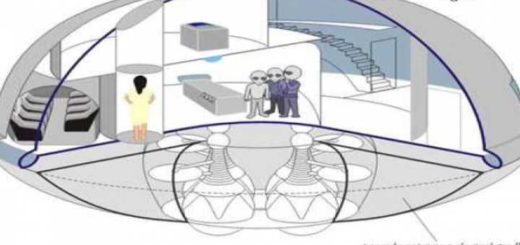Cosmic fireworks in nearby galaxies shine light on star formation

An explosion of galactic fireworks is enabling astronomers to peer into the secrets of starbirth.
A team of international scientists spread across four continents has assembled an enormous collection of data examining galaxies in multiple wavelengths, with each wavelength revealing different parts of each stellar city.
“Their combination allows us to probe the various stages of stellar birth — from the formation of the stellar nurseries to the onset of star formation itself and the final destruction of the nurseries by the newly born stars — in more detail than is possible with individual observations,” team member Franceso Belfiore, a researcher at INAF-Arcetri in Florence, Italy, said in a statement. “[This] is the first time we have been able to assemble such a complete view, taking images sharp enough to see the individual clouds, stars, and nebulas that signify forming stars.”
Stars are born when clouds of gas collapse, but the trigger for their formation remains an outstanding mystery, one that the Physics at High Angular Resolution in Nearby Galaxies (PHANGS) survey hopes to begin to resolve.
The PHANGS team used the European Southern Observatory’s (ESO) Very Large Telescope and the Atacama Large Millimeter/submillimeter Array (ALMA) to survey more than 30,000 nebulas of warm gas and mapped around 100,000 cold-gas regions across 90 nearby galaxies to produce an unprecedentedly sharp atlas of stellar nurseries in the close universe. The team also relied on observations from the Hubble Space Telescope, which is run by NASA and the European Space Agency.
“For the first time we are resolving individual units of star formations over a wide range of locations and environments in a sample that well represent the different types of galaxies, ESO astronomer Eric Emsellem said in the statement. “We can directly observe the gas that gives birth to stars, we see the young stars themselves, and we witness their evolution through various phases.”
Five gorgeous galaxies provide insights into how stars are born. each individual image is a combination of observations made at different wavelengths of light. The golden glows mainly correspond to clouds of ionized hydrogen, oxygen and sulphur gas to mark the presence of newborn stars. Bluish background regions reveal the distribution of slightly older stars.
Five gorgeous galaxies provide insights into how stars are born. each individual image is a combination of observations made at different wavelengths of light. The golden glows mainly correspond to clouds of ionized hydrogen, oxygen and sulphur gas to mark the presence of newborn stars. Bluish background regions reveal the distribution of slightly older stars. (Image credit: ESO/PHANGS)
Explosive starbirth
To the untrained eye, the collection of galaxies looks like brilliant fireworks exploding across the night sky. Astronomers want to use these explosions to better understand the details of starbirth.
“There are many mysteries we want to unravel,” Kathryn Kreckel, an astronomer at the University of Heidelberg in Germany, said in the statement. “Are stars more often born in specific regions of their host galaxies — and, if so, why? And after stars are born, how does their evolution influence the formation of new generations of stars?”
By combining the distinctive powers of the trio of telescopes — Very Large Telescope, ALMA and Hubble — the team could scan the galactic neighborhood in visible, near-infrared and radio wavelengths, each observation unveiling distinct parts of the observed galaxies.
“By combining observations from some of the world’s most powerful telescopes, we can examine the galactic regions where star formation is happening, compared to where it is expected to happen,” Rebecca McElroy of the University of Sydney in Australia said in a separate statement.
“This will give us a chance to better understand what triggers, boosts or holds back the birth of new stars,” she said.
The nearby spiral galaxy NGC 4303 glows with the golden light of clouds of molecular gas that provide the material for stellar birth in this image combining observations from ALMA and the VLT.
The nearby spiral galaxy NGC 4303 glows with the golden light of clouds of molecular gas that provide the material for stellar birth in this image combining observations from ALMA and the VLT. (Image credit: ESO/ALMA (ESO/NAOJ/NRAO)/PHANGS)
While the new atlas makes significant progress towards solving the outstanding mysteries, future instruments will only improve the process. NASA’s upcoming James Webb Space Telescope, set to launch later this year, and the ESO’s Extremely Large Telescope, which will begin operations on the ground later this decade, will enable an even more detailed probe of the makeup of stellar nurseries.
“As amazing as PHANGS is, the resolution that we produce is just sufficient to identify and separate individual star-forming clouds, but not good enough to see what’s happening inside them in detail,” Eva Schinnerer of the Max Planck Institute for Astronomy in Germany and principle investigator of the PHANGS project said in the ESO statement.
“New observational efforts by our team and others are pushing the boundary in this direction and others,” she said. “We have decades of exciting discoveries ahead of us.”



 Creators of mankind
Creators of mankind Description of “Tall white aliens”
Description of “Tall white aliens” Where they came from?
Where they came from? About hostile civilizations
About hostile civilizations The war for the Earth
The war for the Earth “Tall white aliens” about eternal life
“Tall white aliens” about eternal life Video: “Nordic aliens”
Video: “Nordic aliens” Aliens
Aliens Alien encounters
Alien encounters The aliens base
The aliens base UFO
UFO Technology UFO
Technology UFO Underground civilization
Underground civilization Ancient alien artifacts
Ancient alien artifacts Military and UFO
Military and UFO Mysteries and hypotheses
Mysteries and hypotheses Scientific facts
Scientific facts


















